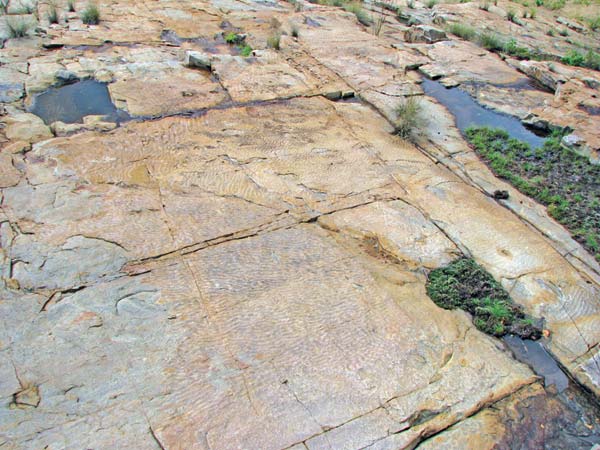GSA Today
Volume 18, Number 10 (October 2009)

About the cover:
Multidirected ripple marks preserved in an ancient siliciclastic tidal flat of the 2.9 Ga Pongola Supergroup, South Africa. Studies in modern settings show that such a chaotic ripple mark pattern is caused by the interaction of sediment-stabilizing microbial mats with episodic storm events. In concert with a multitude of other “microbially induced sedimentary structures” (MISS), these ripple marks potentially record the oldest and most diverse cyanobacterial population in Earth's history. Photo courtesy N. Noffke. See “Turbulent lifestyle: Microbial mats on Earth's sandy beaches — Today and 3 billion years ago” by Nora Noffke, p. 4-9.